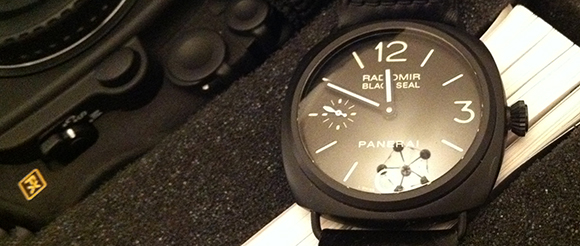Question at work: Where are you at with wearables?
I think it might be worth pulling the problem apart a little bit. What do we mean by wearables?

Well… good question:-)
Chips and tokens
If I could chip my 13-year-old daughter I possibly would. This would make her body part of the cloud and the chip a sort of wearable.
Same thing applies to other devices that are either permanently online or can trigger a beacon. I backed Tile and bought a card and it’s pretty cool. I’ve got a few attached to things I carry around in my laptop bag.
Does that make my presentation clicker a wearable? I guess not but you can see how these things fit into a wider ecosystem of connected stuff related to a given human.
Worn on the wrist
In terms of actual “wrist” wearables like Apple Watch, I think we have to look at things like Nike Fuel and Fitbit in a different category.
Apple watch is different, from the moment they first talked about it you could tell they were entering the world of “Haute Horlogerie”.

I used to wear a watch made out of Zirconium Oxide with a bullet-proof Sapphire glass. The face was made out of sandwiches of almost radioactive material handled by a team of 35 specialists in Florence and the one I wore was only made in 1000 units.
I recognised this kind of language in the Apple announcement. The use of the word “complication” for example which I’m pretty sure 90% of iPhone buyers had never heard used in the context of a clock, the details of the straps and even the impossibly rare materials priced at “Haute Horlogerie” prices.
The picture would be made complete if the “Edition” watch was impossible to find, only available from tiny boutiques known only to a few cognoscenti…
I think the Apple Watch is interesting because it is disrupting a market that I’m guessing really didn’t see this coming.
That said, Swiss Watch company Mondaine has launched a smart watch (http://www.mondaine.com/files/mondaine_helvetica_no_1smart…) which is a traditional automatic mechanism in a traditional steel case but with fitness sensors included and an integration with Android phones. A few others including Tag introduced smart watches at http://www.baselworld.com this year.
I recently backed a Kickstarter project called Pebble and am counting the minutes until I get my fabulous steel smartwatch.
The Pebble is different. It’s more focused than the Apple watch and from a user experience point of view is designed from a more holistic, service design perspective.
For example, the clock face of the Pebble is designed to be used in darkness and light. After all, what’s the point of a smartwatch that you can’t read in sunlight? Its face isn’t a screen but Kindle-like “digital paper” display readable even in bright sunshine. As a result of this approach, the battery life is much much longer than Apple Watch’s.
Pebble also introduces a new interaction metaphor.
Apple Watch has a groovy winder but as far as I can tell, the screen interactions seem very similar to what you’re used to on a phone. Pebble on the other hand has re-visited the entire interface to follow a “time” metaphor. Everything you do on the Pebble fits into a timeline concept, where am I now? what is the future? the past etc.
I think these devices all look awesome and I want them now, but the ones I find most satisfying from a design perspective are the ones that explore the areas closest to the human
so Apple, try a little harder and how about a menstrual cycle calculator in your fitness app?
No? Oops I forgot, not so many women on the design team looking at the full journey of what we are all trying to achieve every day.
In
(comments disabled)

